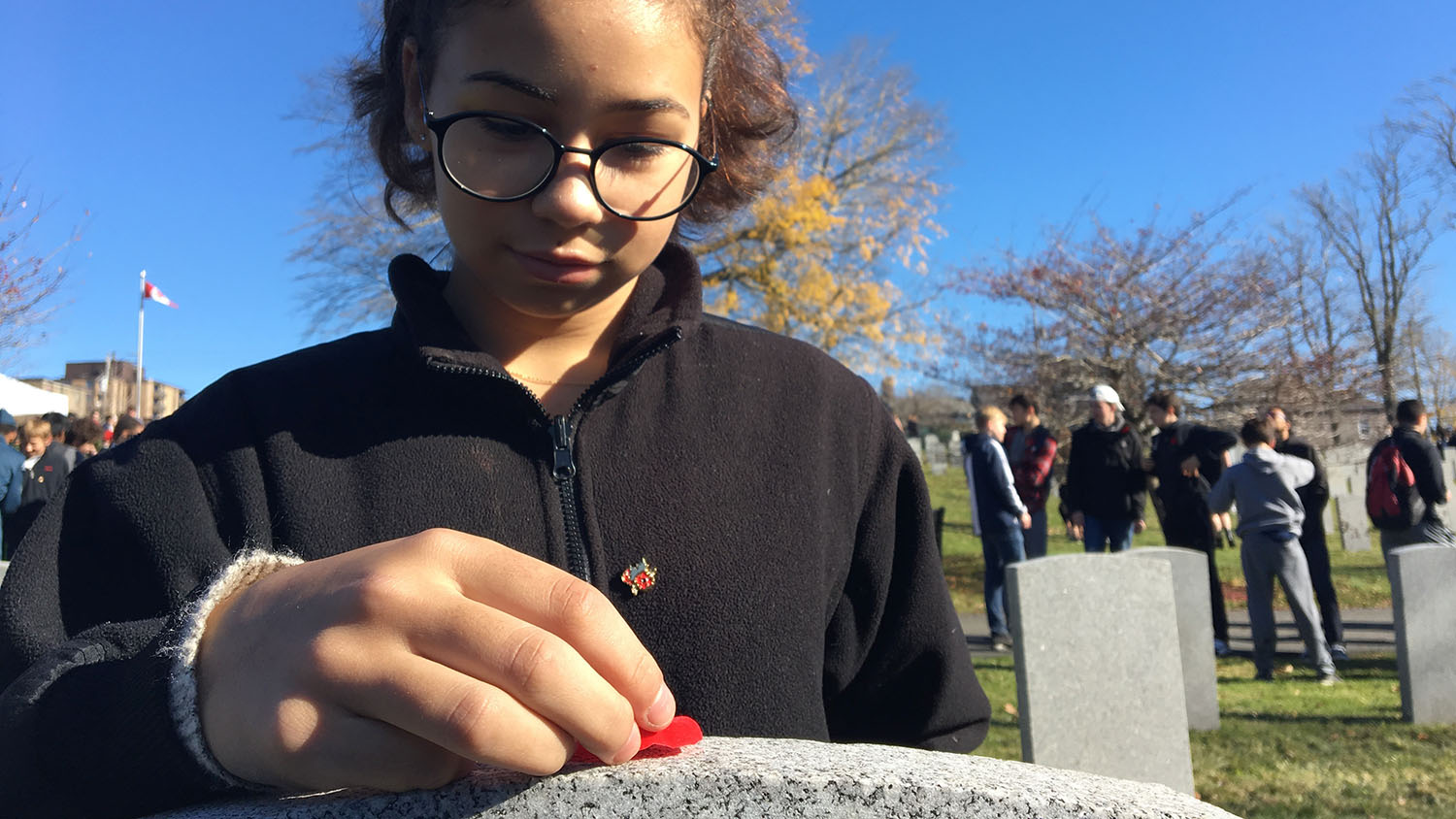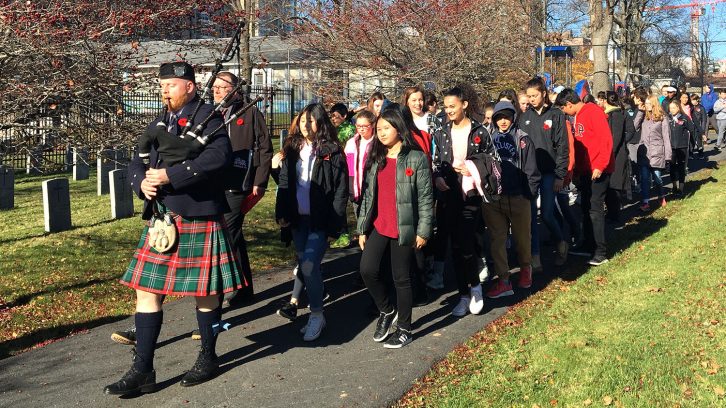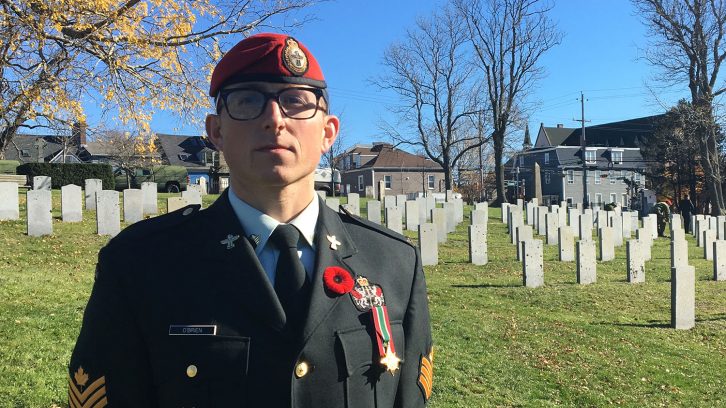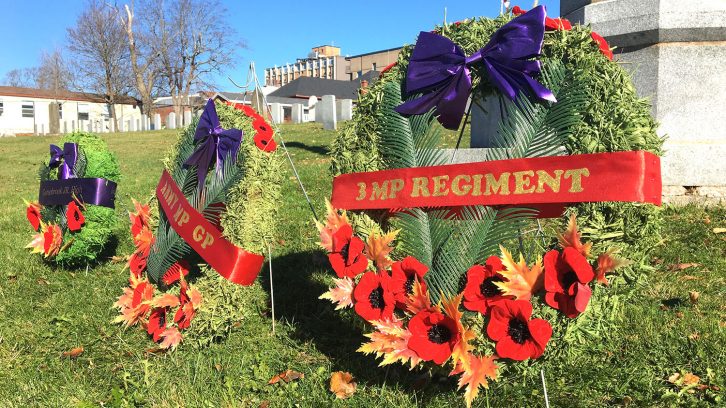Remembrance Day
Students visit military graves ahead of Remembrance Day
Students place poppies on all 1,200 graves at Fort Massey Cemetery

caption
Carina Rolfe, 14, lays a poppy on Pte. Wallace Lamrock's grave at Fort Massey Cemetery.As Carina Rolfe, 14, laid a poppy on Pte. Wallace D. Lamrock’s grave on a chilly, fall day, she thought of all the soldiers who died for Canada.
“It makes me think about being more grateful and saying ‘thank you’ more,” she said.
Lamrock died July 26, 1958, at age 50. He was part of the 85th Battalion of the Canadian Expeditionary Force, also known as the Nova Scotia Highlanders. The battalion is best known for capturing Hill 145 during the battle for Vimy Ridge, where the Vimy memorial now stands.
Carina is one of about 220 students from Gorsebrook Junior High School in Halifax who were at Fort Massey Cemetery on Friday as part of No Stone Left Alone. It’s a ceremony where students across Canada lay a poppy on every military grave in the country. Related stories
A look at what Remembrance Day means to veterans
“It made me feel a lot more emotional towards the whole Remembrance Day,” said Carina.

caption
Students from Gorsebrook Junior High arrive at Fort Massey Cemetery on Friday.Sgt. Christopher O’Brien, who was at the ceremony as part of the military reserves, said students seemed to connect with the history and reality of the military.
“It was really good to have the students out here, physically laying down the poppies on the graves. It’s one thing to see it on TV, but it’s another to actually be there in person and actually recognizing the sacrifices and putting those poppies on the gravesites and tombstones.”

caption
Sgt. Christopher O’Brien attended the No Stone Left Alone ceremony with Gorsebrook students.The annual ceremony was started by Maureen Bianchi-Purvis, the daughter of a soldier.
In an interview Thursday, her husband, Randall Purvis, explained the beginning of the foundation. As her mother lay dying she told a 12-year-old Maureen, “don’t forget me on Armistice Day.”
From then on, Maureen would visit Beechmount Cemetery in Edmonton every Nov. 11 to place a poppy on her mother’s grave.
It was the Purvis’s daughter who inspired them to create No Stone Left Alone when she noticed there weren’t poppies on other soldiers’ graves. The first ceremony was held in 2011. Purvis said the goal is to make a simple gesture as a sign of respect to every one of the 117,000 soldiers buried in Canada.
“We won’t stop until we’ve accomplished just that,” he said.
Involving children in the ceremony is key to the project, he added.
“They look at a headstone, they place a poppy at the base of the headstone, and they say, ‘thank you’,” he said. “It’s a very different experience for most of the children.”
The Armistice agreement that brought an end to the First World War was signed on Nov.11, 1918. In the First World War some 59,544 soldiers died. About 45,000 died in the Second World War.
Twelve hundred soldiers are buried in Fort Massey Cemetery. It’s the largest military graveyard in Nova Scotia.



c
creagen